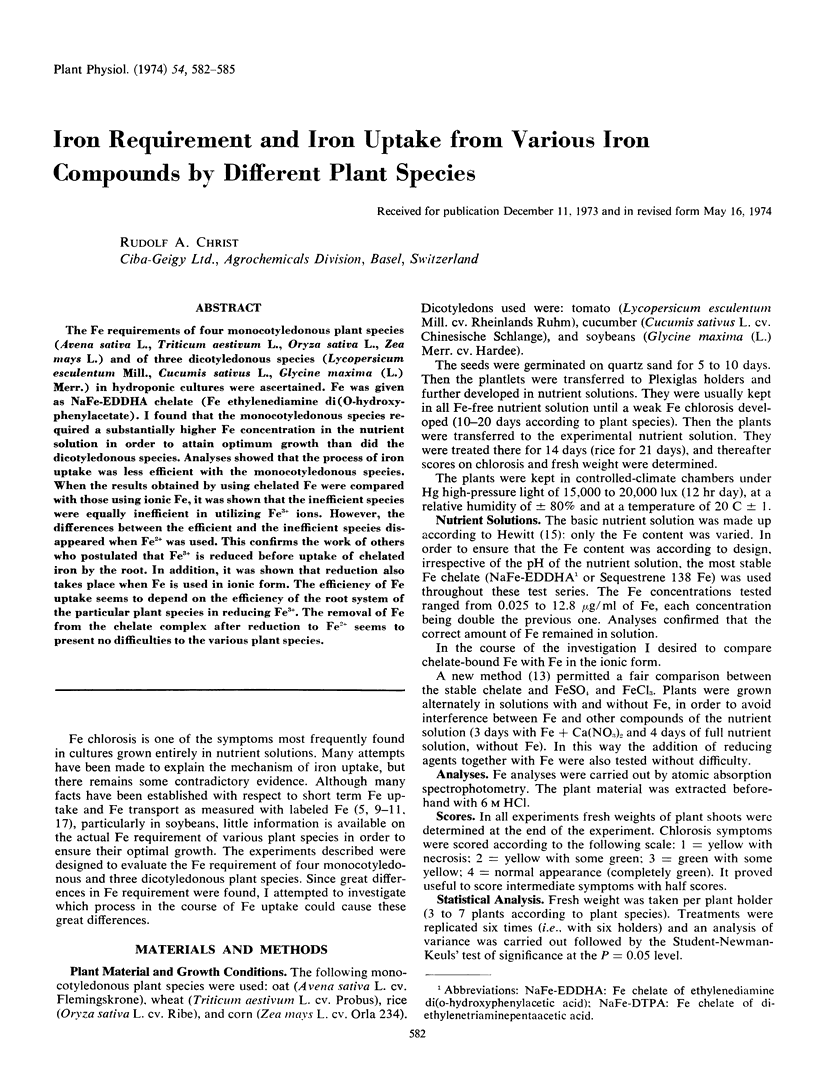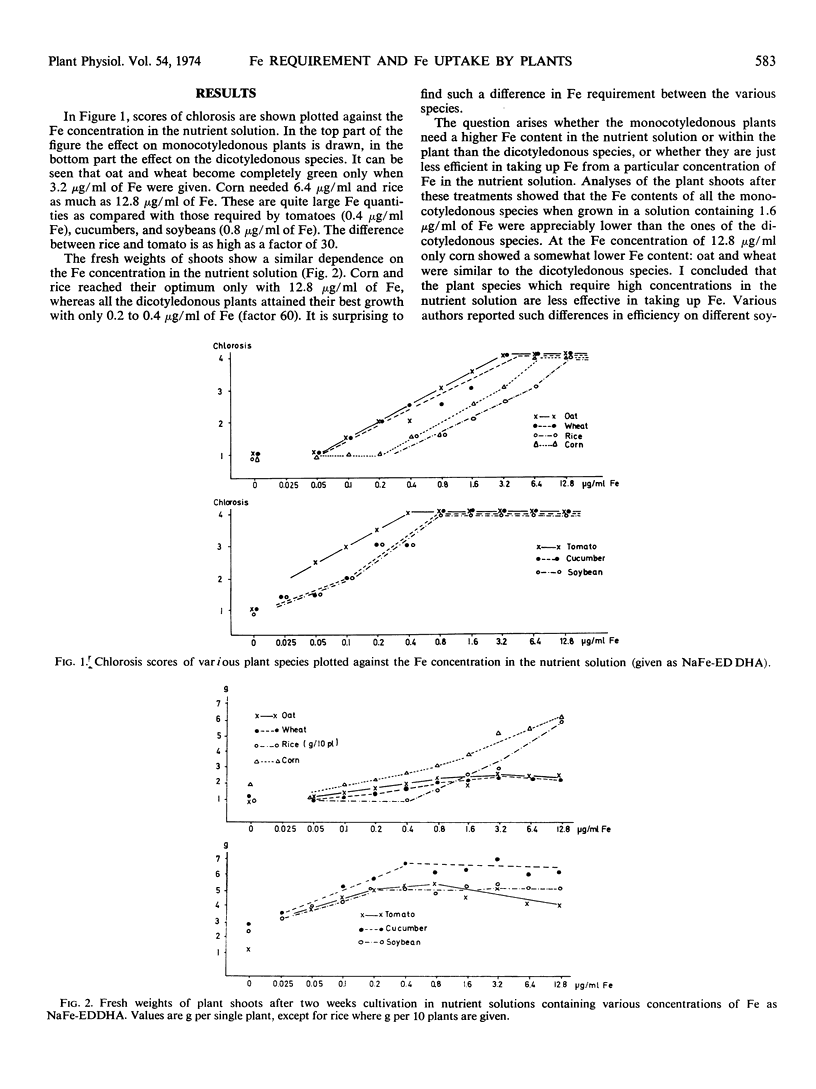Abstract
The Fe requirements of four monocotyledonous plant species (Avena sativa L., Triticum aestivum L., Oryza sativa L., Zea mays L.) and of three dicotyledonous species (Lycopersicum esculentum Mill., Cucumis sativus L., Glycine maxima (L.) Merr.) in hydroponic cultures were ascertained. Fe was given as NaFe-EDDHA chelate (Fe ethylenediamine di (O-hydroxyphenylacetate). I found that the monocotyledonous species required a substantially higher Fe concentration in the nutrient solution in order to attain optimum growth than did the dicotyledonous species. Analyses showed that the process of iron uptake was less efficient with the monocotyledonous species. When the results obtained by using chelated Fe were compared with those using ionic Fe, it was shown that the inefficient species were equally inefficient in utilizing Fe3+ ions. However, the differences between the efficient and the inefficient species disappeared when Fe2+ was used. This confirms the work of others who postulated that Fe3+ is reduced before uptake of chelated iron by the root. In addition, it was shown that reduction also takes place when Fe is used in ionic form. The efficiency of Fe uptake seems to depend on the efficiency of the root system of the particular plant species in reducing Fe3+. The removal of Fe from the chelate complex after reduction to Fe2+ seems to present no difficulties to the various plant species.
Full text
PDF



Selected References
These references are in PubMed. This may not be the complete list of references from this article.
- Ambler J. E., Brown J. C. Iron-stress Response in Mixed and Monocultures of Soybean Cultivars. Plant Physiol. 1972 Dec;50(6):675–678. doi: 10.1104/pp.50.6.675. [DOI] [PMC free article] [PubMed] [Google Scholar]
- Brown J. C., Chaney R. L. Effect of iron on the transport of citrate into the xylem of soybeans and tomatoes. Plant Physiol. 1971 Jun;47(6):836–840. doi: 10.1104/pp.47.6.836. [DOI] [PMC free article] [PubMed] [Google Scholar]
- Brown J. C., Tiffin L. O., Holmes R. S. Competition Between Chelating Agents and Roots as Factor Affecting Absorption of Iron and Other Ions by Plant Species. Plant Physiol. 1960 Nov;35(6):878–886. doi: 10.1104/pp.35.6.878. [DOI] [PMC free article] [PubMed] [Google Scholar]
- Chaney R. L., Brown J. C., Tiffin L. O. Obligatory reduction of ferric chelates in iron uptake by soybeans. Plant Physiol. 1972 Aug;50(2):208–213. doi: 10.1104/pp.50.2.208. [DOI] [PMC free article] [PubMed] [Google Scholar]
- Elmstrom G. W., Howard F. D. Iron accumulation, root peroxidase activity, and varietal interactions in soybean genotypes that differ in iron nutrition. Plant Physiol. 1969 Aug;44(8):1108–1114. doi: 10.1104/pp.44.8.1108. [DOI] [PMC free article] [PubMed] [Google Scholar]
- Tiffin L. O. Translocation of iron citrate and phosphorus in xylem exudate of soybean. Plant Physiol. 1970 Mar;45(3):280–283. doi: 10.1104/pp.45.3.280. [DOI] [PMC free article] [PubMed] [Google Scholar]


